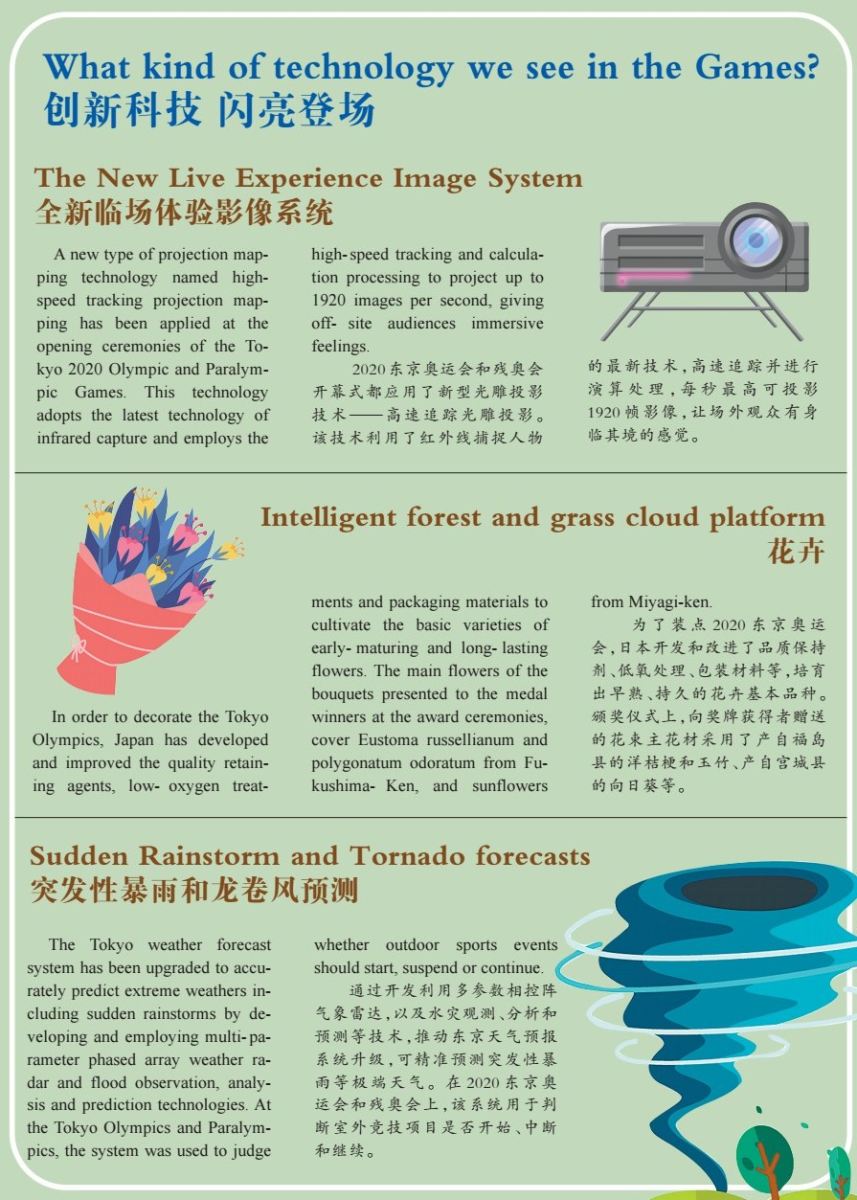The Tokyo 2020 Paralympic Games came to an end on September 5 after the 15-day competitions between athletes all over the world. The Chinese delegation sits atop both the medal table and gold medal table, pocketing a total of 207 medals including 96 golds, 60 silvers and 51 bronzes, a manifesto of country's advancement in Para-sports. What helps Chinese Para-athletes press forward even without legs or eyes?
Patented device holds up sports stars
Chinese table tennis player Feng Panfeng won his fourth consecutive gold medal at 3-2 in the Men's Singles Class 3 sport on August 28. Sitting in a wheelchair, Feng has suffered from the poliomyelitis, but embraced the highlight moments again and again. Just like Feng, many athletes at the Tokyo Paralympics need to employ wheelchairs or prostheses during the competitions. In a bid to achieve more safety and faster speeds, Para-sports aids have become more and more sophisticated with the application of new materials and designs.
The wheelchair Feng sitting in at the Tokyo Paralympics is provided by the Ottobock Company, an official sponsor of the International Paralympic Committee. From the 1988 Seoul Paralympic Games to the Tokyo 2020 Paralympics, Ottobock has supported the previous summer and winter Paralympics with prosthetics, orthopedic fixation and wheelchair repair services and supplied the athletes with the prosthetic feet and joints, basketball wheelchairs and racing wheelchairs for running, long jump and fitness training, according to an executive of Ottobock CN.
?ssur HF's "Cheetah Xtreme" and "Flex-Run" products have also caught the audience's eyes with their superior performances and black-bottom and yellow-edge designs in the Paralympic fields. The company has developed a series of sports prostheses with independent IPRs for the disabled, according to an ?ssur HF executive. Their sports prostheses are made of high-performance carbon fiber composite materials, which can imitate the reaction movements of athletes without disabilities' feet and ankle joints, provide energy return and adjust the configuration according to the Para-athlete's personal physical condition.
Behind these high-tech assistive devices lie IPRs that raise the hopes of Para-athletes. We found on the Baiten website that Ottobock has filed nearly 300 patent applications in China, including 150 granted invention patents such as "a rotating wheel device of wheelchairs" "a wheelchair equipped with a seat that can adjust height and angle" and "a knee joint prosthesis".
Scientific training promotes Olympic spirit
In preparation for the Beijing 2022 Winter Paralympics, the project "Key Techniques for Improving Sports Performance of Paralympic Athletes", headed by Ji Linhong, professor of the Department of Mechanical Engineering, Tsinghua University, was officially launched in November 2018 as a part of the China's national key special project named "Scientific and Technological Winter Olympics". As of date, Ji's team has made progress in studying training simulators and sports prostheses and achieved some innovative fruits.
Cross-country skiing is a crucial endurance event in the Winter Paralympic Games. However, existing cross-country skiing simulators are mainly designed for people in standing positions. The simple design of the sitting cross-country frame could not meet the training needs of Para-athletes. Therefore, Ji's team has optimized the original structure and size of the cross-country ski frame based on the athlete's disability conditions, and obtained some patents including one named "an adjustable sitting ski device". This design can adjust the angles of sitting posture and knee joints and the barycenter's front and rear positions by optimizing the device's material and structure to reduce its weight by up to 30%.
In terms of simulation training devices, the team has submitted more than 10 patent applications including "a simulated skiing machine for sitting ski training and testing for the disabled", and "a skill test and simulation training platform for the standing cross-country skiing", and carried out the patent protection from the aspects of 3D force wireless measurements, pneumatic control systems, and sitting and standing skill tests.
The athletes with physical disabilities can use assistive devices and systems during their training. But how do deaf athletes communicate with their coaches during the training? In order to solve the above communication problem, Yunnan Yunshengxiang Technology Co., Ltd. has developed a pair of smart listening and speaking translation glasses and filed patent applications including one named "a kind of translating glasses".
"The smart hearing and speaking translation glasses can help me make real-time and accurate communication with my coach," Wang Zixiang, founder of Yunshengxiang who won the gold of men's 50-meter breaststroke at the 22nd Summer Deaflympics. This product is composed of three parts including the translating host, the display screen and the hand-held receiver, which can realize two-way conversions between speech and text by using speech synthesis and other AI technologies, according to Wang.
With the aid of high-tech devices and scientific training, athletes can fly with their dream "wings" at the Paralympic Games even if their "wings" were broken. The Tokyo Paralympics end successfully with next year's Beijing Winter Paralympics just around the corner. Life never stops and struggles continue. The Olympic spirit of "Faster, Higher, Stronger - Together" will be passed from generations to generations. (by Liu Ren/Liu Hongyi)

(Editor Wang Xumeng)
(All contents of this newspaper may not be reproduced or used without express permission)